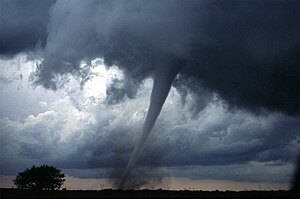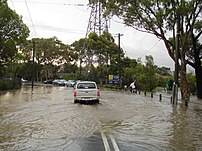Security
Christmas Trees and Holiday Decorations
North Entrance Closure, Aug. 2-6
Due to the increased number of accidents, campus facilities will be closing the North Entrance from Monday, August 2nd through Friday, August 6th in order to repair the marble steps. Please contact Pat Jones in Security with any questions or concerns.
Second Annual Department Equipment/Office Supplies Swap Meet
On Tuesday August 3rd from 10:30 a.m. -1:30 p.m., we invite all departments to come look over all used supplies and equipment in our surplus area. On Wednesday August 4th from 10:30 a.m. -1:30 p.m. all items departments cannot use will be available for all staff to take home for personal use. Personal items must be taken out of the surplus room by Wednesday at 1:30pm unless other arrangements are made with security. The surplus room is located on the ground floor at the bottom of the center stairwell. If you have any questions please contact Pat Jones in security.
2010 Statewide Severe Weather Exercise
The 2010 statewide severe weather exercise will be held at approximately 1:30 p.m., Tuesday, March 9. Jim Cogswell has requested that Ellis library staff participate in this year’s severe weather drill to the extent possible. Minimal staff should remain in service areas to assist users during the exercise. Branch Libraries please contact your building coordinator if you would like to participate in this exercise.
Severe Weather Exercise Drill:
- Outdoor sirens will sound as part of the local warning network to signal the start of the drill.
- Ellis Security will be making a staff-only announcement at 1:30p.m., Tuesday, March 9th to inform staff that the severe weather exercise is beginning.
- For security reasons, please lock any office doors if no staff will remain in the work area.
- Ellis Security staff will be making rounds in the safe areas. Users and staff may feel free to ask any questions.
- When the drill is over, Security will make an announcement informing staff to return to work areas.
Severe Weather Emergency Plan:
When an emergency is declared, all Ellis staff should move immediately to safe areas. On the ground floor, these areas include: the hallway behind the West Entrance staircase; staff lounge; lower stairwells; LTS hallway; and the twin elevator area. On the main level, safe areas include: the Colonnade area and DoIT/OASys computer area. Remember to keep away from all windows (and the skylight opening above the Bookmark Café) to avoid danger from shattering glass.
ICE Could Save a Life

- Image via Wikipedia
With ever growing frequency, paramedics will turn to a victim’s cell phone for clues regarding that person’s emergency contact information. If a victim is unable to communicate coherently, which is often the case; paramedics must rely on other sources. To no ones’ surprise, cell phones are a primary resource. To save precious time at the scene of a medical emergency, response personnel are promoting a simple but ingenious initiative known as ICE.
ICE stands for In Case of Emergency. Cell phone owners simply add the acronym ‘ICE’ preceding the entry in their cell phone address book, which they choose to designate as an emergency contact. You may of course choose more than one contact as your ICE. You may also add critical text (depending on your type of cell phone) regarding your medical status (diabetic, allergic to a certain medication, heart patient, etc.).
Paramedics know what ICE means and they look for it immediately. Emergency response staff can quickly contact your ICE designee – a friend or loved one who is familiar with your specific information. It only takes a few moments of your time to designate your ICE and it could save your life. Please pass it on……
~Ellis Security
Ellis Library Anti-Theft Laptop Registration
Ellis Library Anti-Theft Laptop Registration with MUPD will be held in the colonnade on the first floor.
September 8th & 10th 9 am -1 pm and September 14th noon – 4 pm
Travel Safety
It is almost family vacation time with summer just around the corner. We would like to take this opportunity to recommend some crime prevention safety tips for your home and travel security.
Before you leave:
• You should have your vehicle checked by a mechanic to determine maintenance problems of tires including the spare, belts, hoses, fluids, Battery, etc.
• Plan your trip and give itinerary to a friend or trusted neighbor. Include an emergency number in case they need to contact you.
• Make sure your home is equipped with good locks on your doors and windows. Make sure all the locks are locked prior to leaving.
• Unplug electric garage doors and use a pad lock on the inside railing to prevent illegal entry.
• Remove all exterior “hidden” house keys.
• Have the mail, newspapers and all delivers stopped to your residence.
• Use timers for interior lights and radios or T.V. Make your home appeared to be “lived in.”
• Secure all you valuables in a bank safe deposit box in case of a break-in.
• Make records of all your credit cards and travels check numbers and keep it in a safe place. keep your travel checks stub information separate from the checks
• Do not carry large amounts of cash while traveling. If you must carry cash, do not have it altogether in on location. Put it in different locations in the vehicle, luggage and on your person. Do not flash large amounts of cash while paying for items.
• While traveling, do not stop to assist a motorist. Get their location on the roadway and call the Highway Patrol for that area to get them assistance.
• If you break down on the roadway, raise you hood, stay in your vehicle; keep the windows up and the doors locked and call for assistance via a cell phone. If someone stops ask them to call the Highway Patrol to get you some assistance.
• Place identification name tags on the inside and outside of your luggage. Use your first initial and last name only.
• Place all luggage and hanging clothing in the trunk to avoid looking like you are traveling.
Have a great summer!
Ellis Library Security
Tornado Safety

- Image via Wikipedia
In the wake of the tornadoes that killed throughout the United States, it seems very appropriate, to share some information that “debunks” three popular myths regarding tornado safety. Please take the time to read this information. Many of us who are familiar with Midwest weather can get easily comfortable in our tornado safety knowledge, but some of what we know to be the “best practices” could be, in fact, dangerous myths. Listed below are some tornado safety myths debunked by Roger Edwards from the Storm Prediction Center.
1. Long ago, I was told to open windows to equalize pressure. Now I have heard that’s a bad thing to do. Which is right? Opening the windows is absolutely useless, a waste of precious time, and can be very dangerous. Don’t do it. You may be injured by flying glass trying to do it. And if the tornado hits your home, it will blast the windows open anyway.
2. I have a basement, and my friend said to go to the southwest corner in a tornado. Is that good? Not necessarily. The SW corner is no safer than any other part of the basement, because walls, floors and furniture can collapse (or be blown) into any corner. The “safe southwest corner” is an old myth based on the belief that, since tornadoes usually come from the SW, debris will preferentially fall into the NE side of the basement. There are several problems with this concept, including:
- Tornadoes are not straight-line winds, even on the scale of a house, so the strongest wind may be blowing from any direction; and
- Tornadoes themselves may arrive from any direction.
In a basement, the safest place is under a sturdy workbench, mattress or other such protection — and out from under heavy furniture or appliances resting on top of the floor above.
3. I’ve seen a video of people running under a bridge to ride out a tornado. Is that safe? Absolutely not! Stopping under a bridge to take shelter from a tornado is a very dangerous idea, for several reasons:
- Deadly flying debris can still be blasted into the spaces between bridge and grade — and impaled in any people hiding there.
- Even when strongly gripping the girders (if they exist), people may be blown loose, out from under the bridge and into the open — possibly well up into the tornado itself. Chances for survival are not good if that happens.
- The bridge itself may fail, peeling apart and creating large flying objects, or even collapsing down onto people underneath. The structural integrity of many bridges in tornado winds is unknown — even for those which may look sturdy.
- Whether or not the tornado hits, parking on traffic lanes is illegal and dangerous to yourself and others. It creates a potentially deadly hazard for others, who may plow into your vehicle at full highway speeds in the rain, hail, and/or dust. Also, it can trap people in the storm’s path against their will, or block emergency vehicles from saving lives.
The people in that infamous video were extremely fortunate not to have been hurt or killed. They were actually not inside the tornado vortex itself, but instead in a surface inflow jet — a small belt of intense wind flowing into the base of the tornado a few dozen yards to their south. Even then, flying debris could have caused serious injury or death. More recently, on 3 May 1999, two people were killed and several others injured outdoors in Newcastle and Moore OK, when a violent tornado blew them out from under bridges on I-44 and I-35. Another person was killed that night in his truck, which was parked under a bridge.
These are three of the most common myths in tornado safety. Hopefully this information has been helpful.
Ellis Library Security
Severe Weather Tips

- Image via Wikipedia
Tornados are not the only severe weather phenomena that we should be aware during the severe weather season. Flash floods and floods from steady, consistent rain storms are the #1 weather – related killer with around 140 deaths recorded in the U.S. each year.
Flash flood safety rules:
• WHEN INSIDE: If ordered to evacuate or if rising water is threatening, leave immediately and get to higher ground!
• IF CAUGHT OUTDOORS: Go to higher ground immediately! Avoid small rivers or streams, low spots, valleys, dry riverbeds, etc.
• Do not try to walk through flowing water more than ankle deep!
• Do not allow children to play around streams, drainage ditches or viaducts, storm drains, or other flooded areas!
• IF IN A VEHICLE DO NOT DRIVE THROUGH FLOODED AREAS! Even if it looks shallow enough to cross. The large majority of deaths due to flash flooding are due to people driving through flooded areas. Water only one foot deep can displace 1500 lbs! Two feet of water can EASILY carry most automobiles! Roadways concealed by floodwaters may not be intact.
Information taken from the NOAA weather services website. —Ellis Library Security


![Reblog this post [with Zemanta]](http://img.zemanta.com/reblog_e.png?x-id=455a45ec-9382-46ac-a37e-82e3046eba43)
![Reblog this post [with Zemanta]](http://img.zemanta.com/reblog_e.png?x-id=de63a970-5559-4acf-b95c-31ddef13402e)
![Reblog this post [with Zemanta]](http://img.zemanta.com/reblog_e.png?x-id=ffb316ce-02d8-4e16-80be-8bb673905c73)
![Reblog this post [with Zemanta]](http://img.zemanta.com/reblog_e.png?x-id=d070f5ca-3d1c-4f9e-928d-0bbdcaf23bc8)